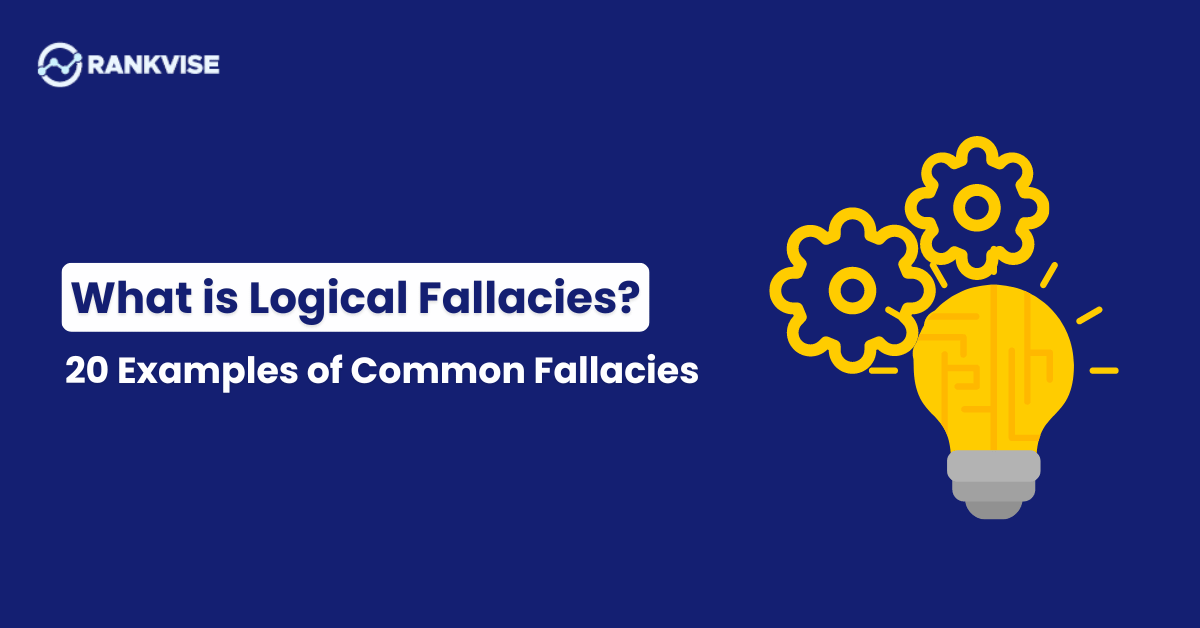What is Logical Fallacies?
A logical fallacy is an error in reasoning that can undermine the validity of an argument. Logical fallacies can take many different forms and can be difficult to identify, but they are important to recognize because they can lead to incorrect conclusions, even if the argument appears to be compelling at first glance.
They can take many different forms, but all involve making a claim or drawing a conclusion that is not adequately supported by the evidence or reasoning presented. Logical fallacies can be found in everyday conversation, in advertising and media, and even in formal debates and discussions.
One of the key features of logical fallacies is that they can be persuasive, even if the argument is not actually valid. This is because fallacies often appeal to emotions or preconceived beliefs, rather than to reason and evidence. For this reason, it is important to be able to recognize and avoid logical fallacies in your own arguments and to recognize them when they are used by others.
Here are 20 common logical fallacies:
- Ad Hominem: Attacking the person making the argument instead of the argument itself.
- Straw Man: Distorting or oversimplifying an opponent’s argument to make it easier to attack.
- False Dilemma: Presenting only two options as the only possibilities, when in fact there are more options available.
- Hasty Generalization: Drawing a conclusion based on insufficient or unrepresentative evidence.
- Circular Reasoning: Begging the question, or assuming what one is trying to prove in the argument.
- Non Sequitur: Drawing a conclusion that does not logically follow from the premises of the argument.
- Slippery Slope: Arguing that a small initial step will lead to a chain of events, without providing any evidence to support the prediction.
- Bandwagon: Arguing that something is true or right because many people believe it to be true or right.
- Appeal to Authority: Arguing that something is true or right because an authority figure says it is true or right.
- Ad Populum: Arguing that something is true or right because it is popular.
- False Analogy: Drawing an analogy between two things that are not sufficiently similar to support the conclusion.
- Red Herring: Introducing a distraction to shift the focus away from the argument at hand.
- False Cause: Assuming that one event caused another event, without providing sufficient evidence to support the claim.
- Confirmation Bias: Seeking out only evidence that supports one’s beliefs, while ignoring or downplaying evidence that contradicts those beliefs.
- Cherry Picking: Selecting only the evidence that supports one’s position, while ignoring or downplaying evidence that contradicts that position.
- Gambler’s Fallacy: Assuming that past events will influence future events, when in fact they are independent of one another.
- Post Hoc: Assuming that because one event followed another event, the first event must have caused the second event.
- False Attribution: Attributing a quote or statement to the wrong person.
- Straw Man: Exaggerating or oversimplifying an opponent’s argument in order to make it easier to attack.
- Equivocation: Changing the meaning of a key term in the middle of an argument.
These are some of the most common logical fallacies that you may encounter in everyday arguments. By being aware of these fallacies, you can improve your critical thinking skills and better evaluate the arguments of others.





